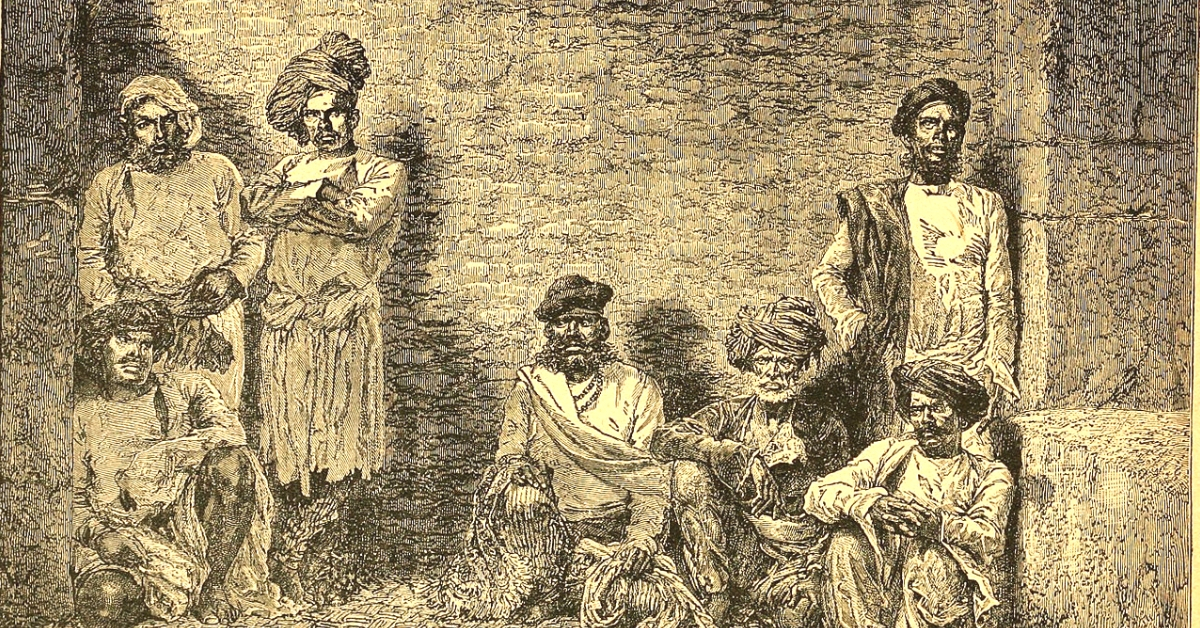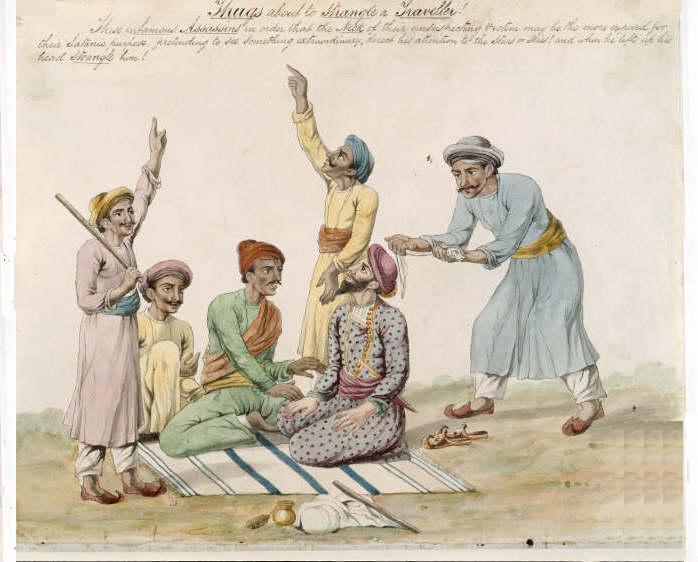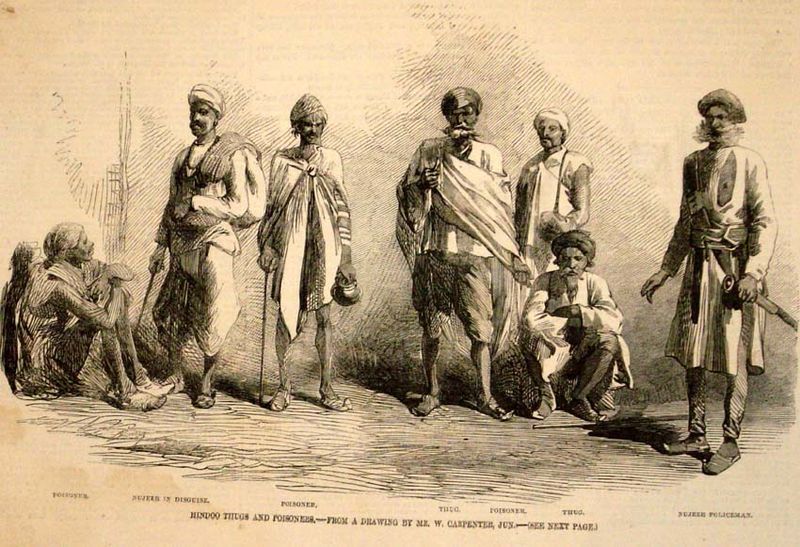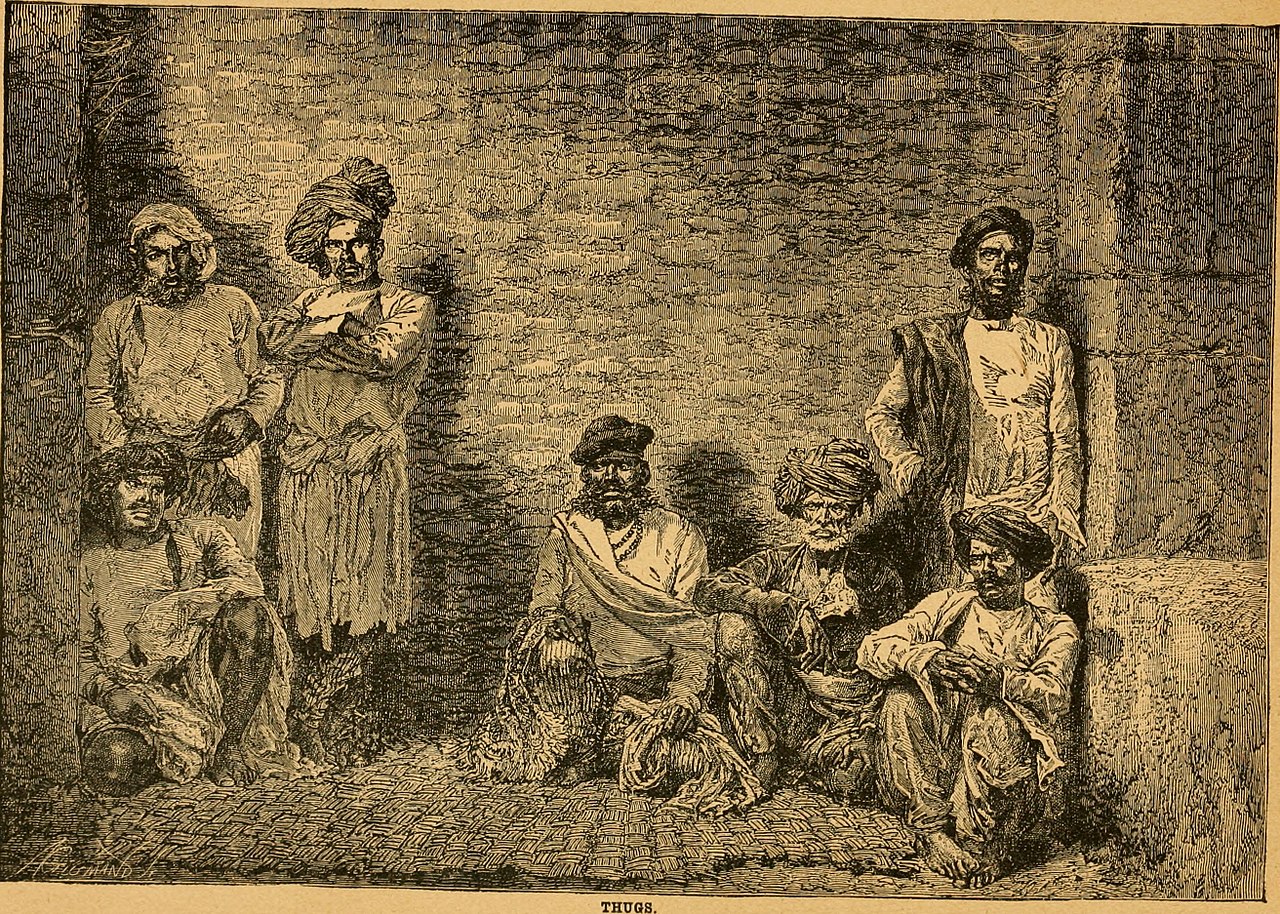Who Were The Real ‘Thugs of Hindostan’? Here’s What History Says
Saw the trailer? Now read the fascinating story of how this word evolved!

There is a lot of buzz surrounding director Vijay Krishna Acharya’s upcoming release, ‘Thugs of Hindostan,’ starring Amitabh Bachchan, Aamir Khan and Katrina Kaif. This work of fiction revolves around a bandit named Azad (played by a Jack Sparrow-like Amitabh Bachchan), whose gang of ‘thugs’ challenge the East India Company in the late 18th and early 19th century.
Despite the obvious anti-colonial narrative, the origin of the word ‘thug’ (‘thugee’ for plural in British India) which basically means anyone committing mindless violence, is a lot less flattering.
This was the term the British had coined for bandits who would murder and rob unsuspecting travellers after befriending them under false pretences in and around Central India.
It comes from the Sanskrit word ‘thag,’ which means to deceive or trick.
Little surprise that the first known reference to the word ‘thag’ was found in the writings of Indian philosopher Bhasarvajna in the 10th century. It subsequently appeared in the 12th century Sanskrit texts, and in fact, the famous 16th century Bhakti poet Surdas once wrote (translated into English):
‘As a thag lures a pilgrim with laddus sweet with wine
Make him drunk and trusting takes his money and his life’
It next made an appearance in the writings of Dr Robert Sherwood titled ‘Of the Murderers called Phansigars’, which was published in 1816 in the Madras Literary Gazette.
“According to him, the thugs were superstitious and their tutelary deity was the goddess Kali. The thugee are said to have avoided spilling blood to appease the goddess, so their chosen method of killing was to strangle their victims with a yellow rumal/cummerbund (handkerchief/belt),” writes Mayur Mulki for Live History India.
The next person to chronicle their exploits was a British soldier and administrator of some repute William ‘Thugee’ Sleeman (who also discovered the first dinosaur fossils in India), who during the late 1820s and early 1830s, led a campaign to obliterate what he believed to be a “secret criminal group, partly hereditary in membership, who specialized in the murder by strangulation of travellers as a prelude to theft,” according to this Wikipedia profile.

“Once the victim or victims were dead the bodies were stripped of all identification and thrown into round graves dug beforehand, their stomachs cut open to disperse any gases produced during decomposition that might attract attention, while their possessions were taken off by a small contingent of the gang to be divided up later,” says this column in The Telegraph by Miranda Carter.
In 1835, he managed to capture the notorious Thug “Feringhea” (also known as Syed Amir Ali) and turned him into a collaborator. After taking his captors to the graves where the victims were buried and naming all those Thugs involved in these crimes, Sleeman began a wide-ranging operation to suppress these elements. During his campaign, more than 1400 Thugs were hanged or imprisoned.
However, both British and Indian historians have since questioned the claims that such Thugs had every existed or at least in the way Sleeman described them in his writings.
“In Hindustani ‘Thug’ meant not a murderer, but trickster or con man. It was undeniable that they had appeared at a moment when the East India Company, then ruling large parts of India in the name of the British government, had been very keen to find justifications for its continued and ever-extending presence in India, and that their lurid story perfectly illustrated why India needed the British and their civilising influence,” writes Carter.

For example, historian Kim Wagner argues that becoming a Thug wasn’t based on caste but practiced by all segments of society.
Also Read: Seen the Padmaavat Trailer? Here’s What History Says About This Saga!
“Thugee was also a seasonal occupation, with the thugs leaving their villages after the autumn harvest (October-November) and returning around June-July, before the monsoons. When a group returned to the village, the loot was used to repay, with high interest, the zamindar or main financier,” adds this Live History India account.

Nonetheless, the word and the terrors associated with them caught the attention of the British public and entered the local imagination through the fictional novel Confessions of a Thug (1839) that was written by novelist Phillip Meadows, and was based on Syed Amir Ali’s life. It was a massive hit with the British public, and even Queen Victoria was a massive fan.
(Edited by Gayatri Mishra)
Like this story? Or have something to share? Write to us: [email protected], or connect with us on Facebook and Twitter.
If you found our stories insightful, informative, or even just enjoyable, we invite you to consider making a voluntary payment to support the work we do at The Better India. Your contribution helps us continue producing quality content that educates, inspires, and drives positive change.
Choose one of the payment options below for your contribution-
By paying for the stories you value, you directly contribute to sustaining our efforts focused on making a difference in the world. Together, let’s ensure that impactful stories continue to be told and shared, enriching lives and communities alike.
Thank you for your support. Here are some frequently asked questions you might find helpful to know why you are contributing?


This story made me
-
97
-
121
-
89
-
167











